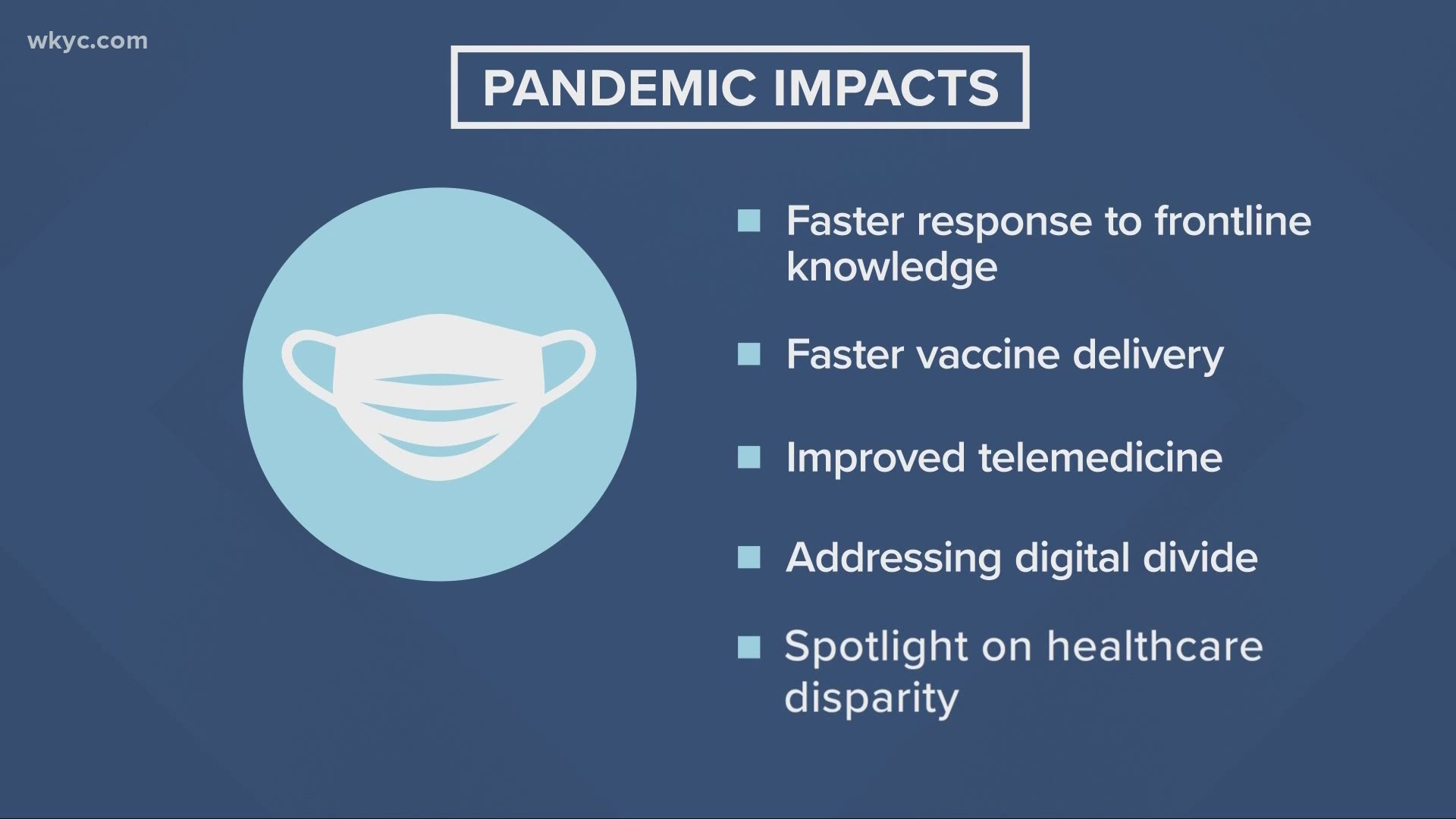CLEVELAND — We have never experienced a year like this in our lifetime. A global pandemic, impacting every person on the planet.
One of the biggest impacts we witnessed thought was how fast science shared the knowledge it learned on the front lines to those creating treatments back in the lab. Within months, not years, game-changing treatments like Remdesivir and monoclonal antibodies arrived at the patient’s bedside.
And of course, vaccines. The record for the last vaccine to go from lab to market was four years. Moderna and Pfizer did it in less than nine months.
“There’s no reason that you can’t extrapolate this phenomenon to many other diseases,” says Dr. Gilbert Palmer, Chief Clinic Officer for Mercy Health.
Government funding and existing research played a huge role in getting these vaccines to market faster, but so did the FDA allowance for cutting through some bureaucratic red tape.
“I look optimistically to the next five to ten years to see so many of the chronic diseases we’re managing, that would have been death sentences to be nothing more than a couple of shots,” Dr. Palmer said.
Because of the pandemic we saw telemedicine explode as a primary resource during lockdown, but now the technology has become standard.
“That key is not going to go away and also opens up the other avenues of quality how do I check in with my patients more frequently and meet them where they’re at to get them the care that they need,” Dr. Palmer said.
But to do that equally, local hospital systems are bridging the digital divide for those in underserved neighborhoods to have access to virtual care.
“We have expanded our presence in our neighborhoods by allowing the broadband access to our neighbors from the roofs of our Cleveland Clinic facilities, (EDIT TO) in order for us to be able to provide telehealth, people have to have access to broadband and also access to digital devices. I would like to say that telehealth is going to be a really important way to provide care. It is not going to be the only way to provide care.” Cleveland Clinic President and CEO Dr. Tom Mijalevic said.
Another impact of the pandemic is the spotlight on healthcare disparity.
“We're recognizing that it's not just medical care. That matters. There are so many social determinants of health that we need to address for, for a lot of folks and what the community needs from us, and that's what we're going to to deliver. So for me, I'm very optimistic that we will have a great impact on, on racial disparities,” says MetroHealth President and CEO Dr. Akram Boutros.
In a literal year of trial by fire, the devastation and lives lost to this pandemic will not be in vain. Already applications to medical and nursing schools are on the rise as young people want to enter healthcare. And the public will now expect, if not demand, a boost to innovation to better prepare us for what may come.
“So there will be long term positive impacts here, both on regulation. I believe a speed of response and also in just the advancement of medicine as a result of this because I just don't believe that the bureaucracy that we had to go through, including receiving PPE and distributing vaccines and all of that is going to be acceptable to the world,” Dr. Boutros said.
More from Monica Robins:
- The COVID-19 pandemic: One year later
- EXCLUSIVE | Finding a COVID-19 vaccine in Ohio: What Cleveland’s hospital CEOs want you to know and what to expect from the months ahead
- EXCLUSIVE I Our greatest challenges in a post-pandemic Ohio: Cleveland’s hospital CEOs see long-lasting problems from COVID-19
- EXCLUSIVE I Decade after the pandemic: Cleveland’s hospital CEOs share their vision for how COVID-19 will impact jobs in healthcare for years to come
- EXCLUSIVE I The good and the bad: Cleveland’s hospital CEOs reveal how healthcare has changed permanently after the pandemic

